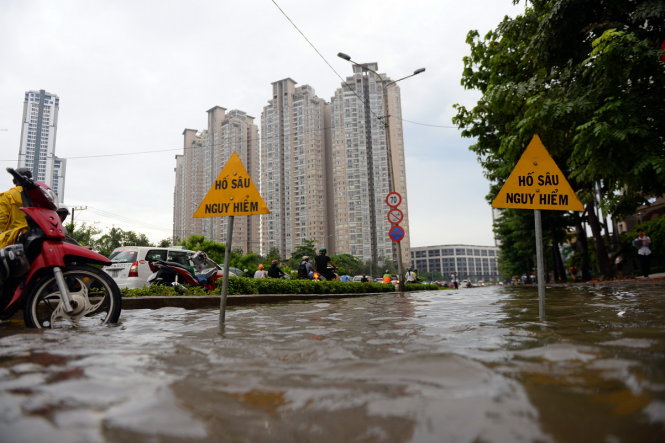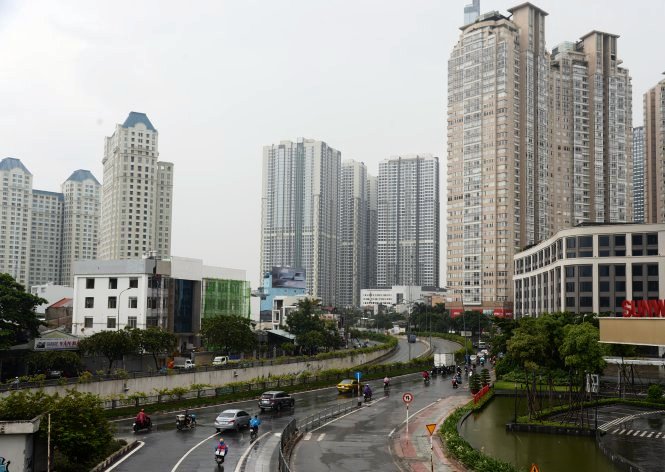An expert from the Netherlands has warned that Ho Chi Minh City is among the five cities across the world that are at risk of sinking.
If no prompt and assertive measures are taken, the southern Vietnamese metropolis may end up under water in the future, a problem that Jakarta, the world’s top sinking city, is facing, according to Gilles Erkens from Deltares, an independent institute in the Netherlands.
Erkens pointed out that Ho Chi Minh City had sunk by half a meter over the past 25 years.
Over 60 percent of the southern hub has an elevation of under 1.6 meters, while the highest tide was recorded at 1.72 meters in December 2017.
The situation is most evident around the flyover on Nguyen Huu Canh Street in Binh Thanh District, which usually becomes flooded whenever it rains.
The street was opened to traffic in 2002 and subsidence was first discovered along multiple sections in 2003.
As part of the road sank by five centimeters to up a meter, the municipal administration had to ask the Institute for Building Science and Technology to evaluate the problem.
The situation became worse as of 2010.
 |
| A section of Nguyen Huu Canh Street is inundated after a rain. Photo: Tuoi Tre |
Many other locations in the city are also suffering the same issue.
During a recent conference, Le Van Trung, vice-president of the Ho Chi Minh City Geomatics Association, assessed that multiple areas in Binh Chanh District, Binh Tan District, Nha Be District, Thu Duc District, District 7, District 8, and District 12 had been sinking by five to 10 millimeters every year.
Meanwhile, climate change has caused sea level to rise by about three millimeters a year, Trung continued.
Groundwater exploitation
Trung attributed the city’s gradual sinking to excessive groundwater exploitation and the negative effects of urbanization.
According to Bui Thanh Giang, deputy general director of the Saigon Water Company (Sawaco), more than 128,000 households did not use fresh water provided by the firm as of June.
This means these families may have been exploiting groundwater via their wells.
Most of the households are located in the districts where subsidence occurs.
Statistics from the municipal Department of Natural Resources and Environment showed that over 716, 500 cubic meters of groundwater is exploited in the city on a daily basis, of which 355,000 cubic meters is used by local residents.
The rest is utilized by Sawaco and local businesses.
The city’s administration previously set up a plan to cut down the amount of exploited groundwater to 100,000 cubic meters a day.
However, it is rather difficult to implement the scheme as there is no specific regulation on groundwater exploitation.
Like us on Facebook or follow us on Twitter to get the latest news about Vietnam!






















































